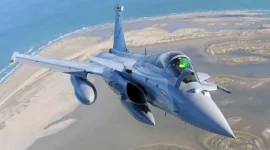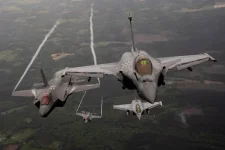- Views: 3K
- Replies: 18
The Indian Air Force (IAF) is set to significantly reshape its attack helicopter capabilities, confirming plans to retire its fleet of ageing Mi-35 Hind gunships by the 2030s.
These Soviet-era helicopters will be succeeded by the domestically produced Light Combat Helicopter (LCH) Prachand, marking a major boost for India's indigenous defence sector.
The IAF currently operates one squadron of Mi-35 helicopters, which entered service in the 1980s. These robust aircraft have served reliably in roles requiring close air support and anti-tank firepower.
To ensure operational readiness until their planned retirement, the existing Mi-35s are undergoing a major refurbishment programme with Russian technical support, extending their service life until the end of this decade.
In a strategic move highlighting self-reliance, the IAF has decided that the LCH Prachand, developed by Hindustan Aeronautics Limited (HAL), will replace the Mi-35. This decision comes despite the Prachand belonging to a lighter weight category than the Mi-35.
Furthermore, the IAF has decided against acquiring more AH-64E Apache attack helicopters from Boeing, beyond the 22 currently in service which were inducted between 2019 and 2021.
An IAF official stated, "The LCH-Prachand will not just replace the Mi-35 but will emerge as the largest attack helicopter fleet type in our inventory soon," signifying strong confidence in the indigenous platform.
The LCH Prachand is specifically designed for agility and performance in challenging environments unique to India, particularly high-altitude mountain warfare.
Weighing significantly less than the Mi-35 (5.8 tons maximum takeoff weight compared to 11.5 tons), the Prachand excels in maneuverability. It possesses the capability to operate effectively at altitudes up to 6,500 metres (21,300 feet), a critical advantage demonstrated during trials in Ladakh, which heavier helicopters like the Mi-35 find difficult.
The Prachand is equipped with a modern sensor suite, a 20mm turret gun, rocket systems, and can carry air-to-air missiles (like the Mistral 2) and air-to-ground missiles (such as the Dhruvastra).
While the heavily armoured Mi-35 was built for direct assaults and carrying troops, the LCH Prachand incorporates modern design elements like reduced radar cross-section (stealth features), advanced avionics for navigation and targeting, and focuses on delivering precise firepower.
This transition reflects an evolving operational approach within the IAF, valuing versatility, high-altitude performance, and indigenous technology alongside combat power.
The commitment to the LCH Prachand is underscored by procurement plans. Fifteen helicopters from an initial Limited Series Production batch are already being inducted (10 for IAF, 5 for the Indian Army).
More significantly, final approval is anticipated for a large order of 156 additional LCH Prachands – 114 designated for the Army and 42 for the Air Force. This substantial order, once finalised, will establish the Prachand as the cornerstone of India's attack helicopter force for the foreseeable future.
The gradual phasing out of the Mi-35, facilitated by its life extension overhaul, will coincide with the increasing induction of the LCH Prachand. This transition marks a notable shift away from reliance on foreign legacy systems towards bolstering India's own advanced defence manufacturing capabilities.



